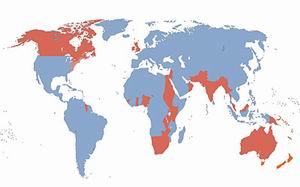Specimens and knowledge
Where in the world?
Different environments
Our active research generates specimens from all over the globe but some regions are better represented in our collections than others. Some of the reasons for this are political.

Some parts of the world have always been easier to access than others. One legacy from our political past is that 10 per cent of our collections are from the British Isles and former British Empire.
Modern politics also play a part in determining which places we collect from. For example, ongoing civil war in Sri Lanka means that we have been unable to collect from the northern part of the island.
Learn more about:
 |
History
Explorers in the past have focused collecting in specific area |
Where in the world
Our research priorities partly dictate where many of our specimens come from today. These priorities are determined by the need to research regions under threat, collaborations with other institutions or governments and, ultimately, funding.
Our collecting is also influenced by the collections we already have. Our large collection of Central American plants means that we already know a lot about this region, which equips us to do further research and collecting there.

Learn more about:
 |
Flora Mesoamericana
Why do we need to do more research on the plants of Central America? |
One long-term collaboration with the Royal Botanic Gardens, Kew, has allowed us to share our responsibilities for researching and collecting plants since 1961. |
|
Different environments
One region can be home to several different types of habitat. We are trying to study as many of them as we can.
Our research takes us to tropical and temperate forests, the deep sea, polluted waterways and places where deforestation, urbanisation and changing climates are threatening habitats and endangering species.
Learn more about:
 |
Collecting methods
We collect specimens and data in a range of habitats |
One long-term collaboration with the Royal Botanic Gardens, Kew, has allowed us to share our responsibilities for researching and collecting plants since 1961. |
|